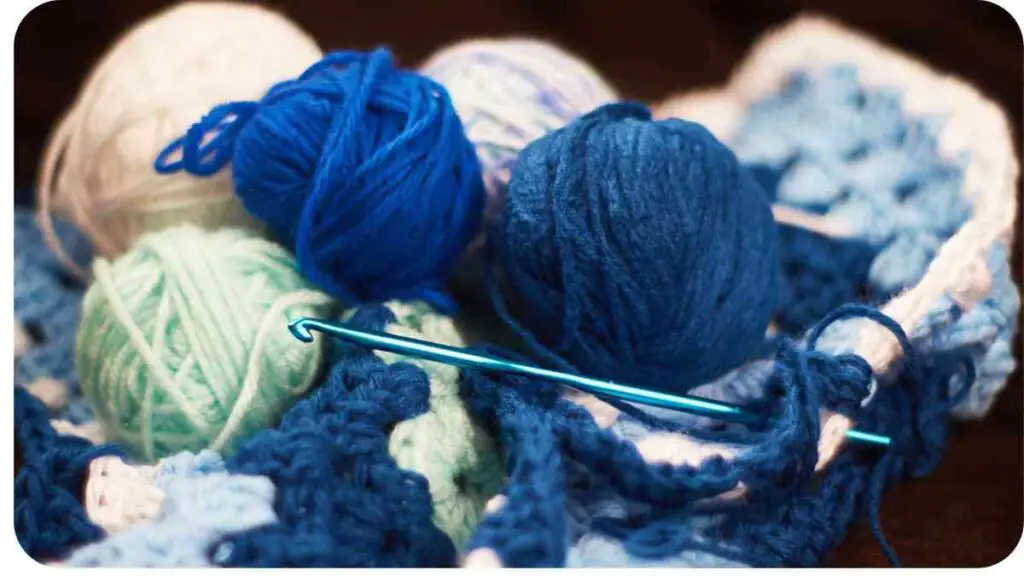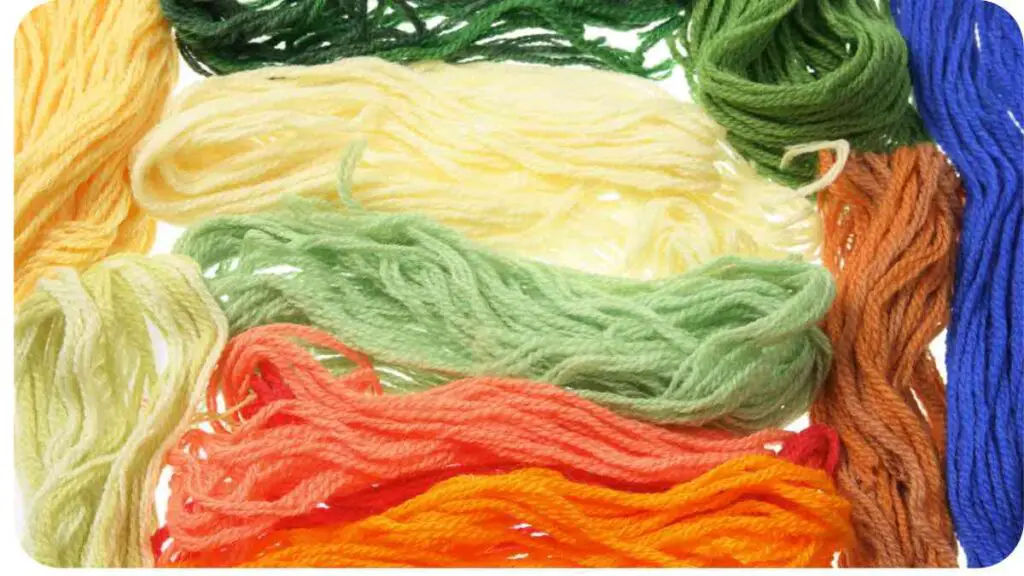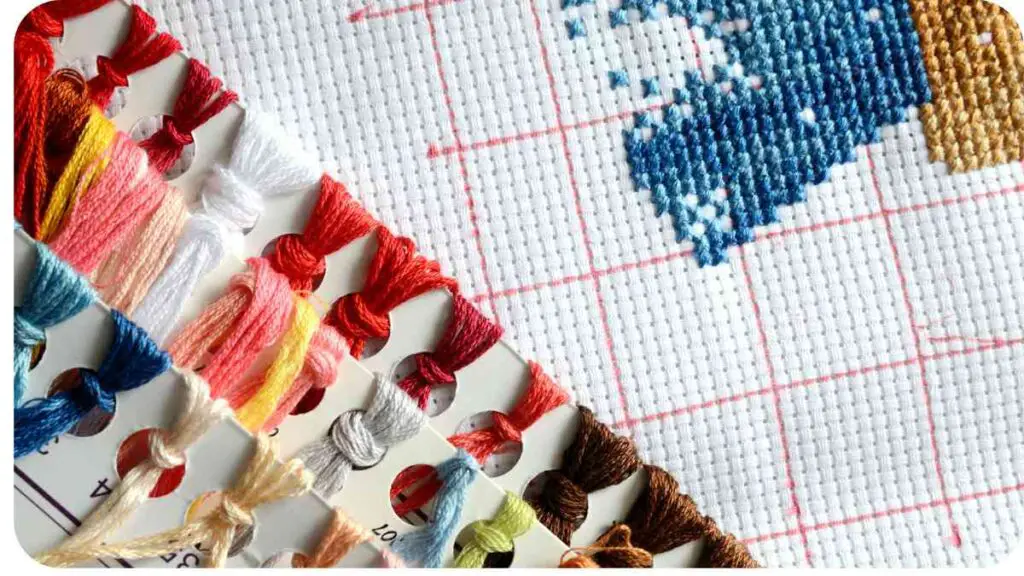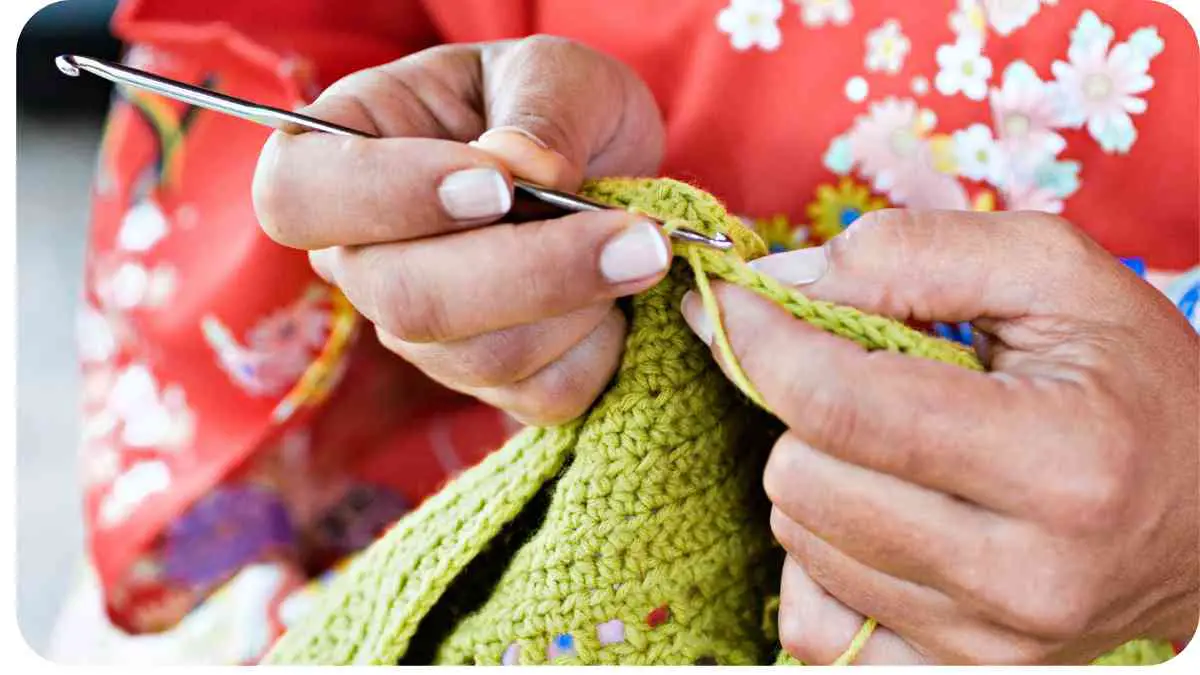Welcome to our comprehensive guide on understanding why your crochet projects may be curling and finding effective solutions to prevent this frustrating issue.
In this article, we will delve into the various causes behind project curling, explore techniques to minimize curling, analyze the impact of yarn choices, and provide practical tips based on personal experiences and expertise.
| takeaway |
| Tension plays a crucial role in determining the outcome of your crochet projects. Maintaining consistent tension helps prevent curling. |
| Choosing the right yarn can make a significant difference in minimizing curling. Some yarn types, like cotton and linen, are less prone to curling. |
| Certain crochet stitches, such as single crochet, half double crochet, and Tunisian crochet, are known to reduce curling. Consider incorporating them into your projects. |
| Blocking techniques, such as wet blocking or steam blocking, can help counteract curling and shape your finished crochet pieces for a flat result. |
| Remember to practice, experiment, and be patient with yourself as you learn how to prevent curling in your crochet projects. Enjoy the process and have fun creating! |
2. Understanding Crochet Project Curling
Crochet project curling refers to the unwanted curling or rolling up of your work, resulting in an uneven or misshapen finished product. This issue can occur in different crochet items such as scarves, blankets, or even hats. By understanding the root causes of curling, we can implement effective solutions to prevent it.
To prevent curling, remember this quick guide offers invaluable tips. Understanding tension and blocking techniques can significantly enhance your crochet experience.
2.1 What Causes Crochet Project Curling?
To identify the causes of crochet project curling, let’s take a look at some common factors that contribute to this issue.
Table: Common Causes of Crochet Project Curling
| Cause | Description |
| Insufficient tension | Loose tension leads to excessive yarn movement, causing the project to curl up. |
| Yarn type and fiber characteristics | Certain yarn types and fibers have a natural tendency to curl when crocheted, aggravating the problem. |
| Improper stitch selection | Some crochet stitches inherently curl due to their structure, causing the project to curl as well. |
| Blocking neglect | Skipping the blocking process prevents the project from settling into its desired shape. |
| Mistakes in crochet technique | Errors in stitch placement, tension consistency, or stitch counts can contribute to curling. |
2.2 Exploring Different Solutions
To address curling in crochet projects effectively, we need to explore various solutions that mitigate these causes.
Table: Effective Solutions to Prevent Crochet Project Curling
| Solution | Description |
| Adjusting tension | Achieving proper tension by finding the right balance between tightness and looseness in your stitches. |
| Opting for suitable yarns | Selecting yarns less prone to curling and considering the fiber characteristics that resist curling. |
| Using curl-reducing crochet stitches | Utilizing stitches known for their ability to minimize curling in crochet projects. |
| Implementing blocking techniques | Blocking your finished project to encourage it to flatten and settle into the desired shape. |
| Practicing correct crochet technique | Avoiding common mistakes through proper stitch placement, tension consistency, and stitch counts. |
3. The Role of Tension in Crochet Projects

Tension plays a vital role in determining the outcome of your crochet projects. Let’s explore the concept of tension and learn some tips for achieving the appropriate tension to prevent curling.
3.1 Understanding Tension in Crochet
Tension refers to the tightness or looseness with which you hold your yarn and work your stitches. Consistent tension ensures uniformity in your crocheted fabric. When it comes to preventing curling, finding the right tension is crucial.
When facing curling issues, consult tips and tricks for using crochet patterns effectively. Proper pattern interpretation can be key to resolving project curling.
Table: Determining and Adjusting Crochet Tension
| Tension Level | Description |
| Too loose | Looser tension results in excess yarn movement and encourages the project to curl. |
| Too tight | Overly tight tension can distort the stitches and create a stiff fabric prone to curling. |
| Just right | Achieving a balanced tension provides an even tension throughout your work, minimizing curling. |
3.2 Tips for Achieving Proper Tension
Maintaining consistent tension can be challenging, especially for beginners. Here are some tips to help you achieve the appropriate tension for your crochet projects:
- Practice, practice, practice: Regularly practicing crocheting will enhance your muscle memory and allow you to achieve better tension control.
- Experiment with hook sizes: Changing hook sizes can help you find the perfect balance between loose and tight tension. If your tension is too loose, try a smaller hook size. Conversely, if your tension is too tight, opt for a larger hook.
- Pay attention to your grip: Find a comfortable grip that allows you to hold the yarn and hook securely but not too tightly. Experiment with different grips to see what works best for you.
- Focus on consistent stitch size: Ensure that each stitch you create has the same height and tightness. Consistency in stitch size helps maintain an even tension throughout your work.
Remember, finding the right tension may take some time and practice. Embrace the process and be patient with yourself. With experience, you will develop a more natural and consistent tension that minimizes curling in your crochet projects.
4. Yarn Choice and Its Impact on Curling

The type of yarn you choose for your crochet projects can significantly impact the likelihood of curling. Understanding which yarns are more prone to curling and selecting the right ones can help you create non-curling projects.
4.1 Identifying Yarn Types Prone to Curling
Certain yarn types and fiber characteristics have a natural tendency to curl when crocheted. Being aware of these properties can help you make informed choices while selecting yarn for your projects.
While focused on knitting, “How to Fix Common Knitting Mistakes: A Step-by-Step Guide” (read more) can help you understand and address crafting mistakes effectively.
Table: Yarn Types and Their Tendency to Curl
| Yarn Type | Curling Tendency |
| 100% Acrylic | High tendency to curl |
| 100% Wool | Moderate tendency to curl |
| Acrylic/Wool Blend | Varies depending on the fiber composition |
| Cotton | Typically doesn’t curl |
| Linen | Typically doesn’t curl |
4.2 Recommended Yarns for Non-Curling Projects
To minimize curling in your crochet projects, consider using yarns that have properties that resist curling. Here are some recommended yarn brands and types that are known for their non-curling characteristics:
Table: Non-Curling Yarn Brands and Types
| Yarn Brand | Non-Curling Yarn Types |
| Red Heart Super Saver | Red Heart Soft, With Love, and Heat Wave |
| Lion Brand | Vanna’s Choice and Heartland |
| Bernat | Softee Baby and Super Value |
| Cascade Yarns | 128 Superwash Merino and Ultra Pima |
Choosing the right yarn can go a long way in preventing curling. Experiment with different yarns and fibers to find the ones that produce the desired results for your projects.
5. Stitch Selection to Minimize Curling

The choice of crochet stitches can greatly influence whether your project will curl or lay flat. Let’s explore some crochet stitches that are known to reduce curling and how to adjust stitch combinations for different project types.
5.1 Crochet Stitches That Reduce Curling
Certain crochet stitches have characteristics that naturally counteract curling, making them ideal for projects where curling is a concern. Consider incorporating the following stitches into your work:
- Single Crochet (SC): The single crochet stitch creates a dense and tight fabric, minimizing curling. It is often used along the edges to keep them straight and prevent curling.
- Half Double Crochet (HDC): The half double crochet has more height than single crochet, providing stability and reducing curling in many projects.
- Double Crochet (DC): The double crochet stitch is taller and looser, making it less prone to curling compared to shorter stitches.
- Tunisian Crochet (Afghan Stitch): Tunisian crochet produces a dense and stable fabric that has minimal curling.
Table: Curl-Reducing Crochet Stitches
| Crochet Stitch | Characteristics |
| Single Crochet (SC) | Creates a dense and tight fabric, preventing curling at the edges. |
| Half Double Crochet (HDC) | Offers more height and stability than single crochet for reduced curling. |
| Double Crochet (DC) | Taller stitch with less curling tendency than shorter stitches. |
| Tunisian Crochet | Produces a dense and stable fabric with minimal curling. |
5.2 Adjusting Stitch Combinations for Different Projects
While individual stitches can help reduce curling, stitch combinations are equally important. Depending on the type of project you’re working on, you may need to adjust your stitch choices accordingly.
For example, if you’re making a scarf, you can begin with a solid border of single crochet to prevent curling, and then move on to a stitch pattern that combines single crochet, half double crochet, and double crochet stitches. This combination provides both stability and visual interest while minimizing curling.
For blankets or larger projects, incorporating a variety of stitch patterns can help distribute stress evenly, reducing the likelihood of curling. Consider alternating stitch patterns with rows of single crochet or half double crochet to maintain stability.
Finding the right stitch combinations for your specific project takes experimentation and personal preference. Play around with different stitches and their combinations to achieve the desired results and minimize curling.
Wondering about the differences between crochet and knitting? Explore “Can You Use Knitting Patterns for Crochet? Understanding the Differences” (find out) to grasp why your crochet project may curl compared to knitting.
6. Blocking Techniques to Counteract Curling
Blocking is a crucial step in the finishing process of your crochet projects. It can help counteract curling and encourage your work to lay flat. Let’s explore different blocking techniques and the step-by-step process of blocking crochet projects.
6.1 Understanding Blocking for Crochet Projects
Blocking involves wetting or steaming your finished crochet piece and shaping it to the desired dimensions. This process relaxes the yarn, allows the stitches to settle, and helps eliminate any curling or unevenness in the fabric.
Table: Different Blocking Techniques
| Blocking Technique | Description |
| Wet Blocking | Involves submerging your crochet project in water before shaping and drying it. |
| Steam Blocking | Using steam to relax the yarn and shape your project without wetting it. |
| Spray Blocking | Spraying your crochet piece with a water mist and then shaping and drying it. |
| Pin Blocking | Securing your project to a blocking board or mat with pins to shape it as desired. |
6.2 Step-by-Step Blocking Process
To effectively block your crochet project, follow these steps:
- Clean your project: Ensure that your finished crochet piece is clean, especially if you’ve been handling it during the creation process. Gently hand-wash it if necessary and allow it to dry completely before blocking.
- Choose a blocking method: Select the blocking technique that best suits your project’s fiber type, size, and desired outcome. Wet blocking and steam blocking are commonly used for most projects.
- Prepare your blocking materials: For wet blocking, you’ll need a clean basin or sink filled with lukewarm water. For steam blocking, a steamer or steam iron with a steaming attachment will suffice. Set up your blocking board or mat and gather rust-proof pins if pin blocking.
- Shape your project: For wet blocking, immerse your crochet piece in the water and allow it to soak for 15-20 minutes. Gently squeeze out excess water (avoid wringing) and lay it flat on your blocking surface. Use your hands to shape it to the desired size and dimensions. For steam blocking, hover the steam source over your work, allowing the steam to penetrate the fibers as you shape them. For spray blocking, mist your project lightly with water and shape accordingly.
- Pin or weigh down your project: If using pin blocking, carefully insert rust-proof pins along the edges of your crochet piece, securing it to the blocking surface. Ensure that the corners are properly shaped. For larger projects, you may also use clean weights to hold down the edges.
- Leave it to dry: Let your blocked project dry completely before removing the pins or weights. This may take several hours or even overnight, depending on the humidity in your environment.
Blocking may seem daunting at first, but with practice, it becomes an essential and rewarding step in achieving a professional finish for your crochet projects.
Conclusion
Curling in crochet projects can be a common challenge, but with the right techniques and understanding, it can be effectively minimized. By paying attention to tension, yarn choice, stitch selection, and blocking, you can create projects that lay flat and showcase your craftsmanship.
Remember to practice to improve your tension control, experiment with different yarns with non-curling properties, select appropriate stitch combinations, and employ blocking techniques to shape your projects. With time and experience, you will become more adept at preventing curling and creating beautiful, flat crochet pieces.
Enjoy the journey of crocheting and have fun exploring various techniques to achieve the desired results in your future projects! Happy crocheting!
Further Reading
Here are some additional resources to explore for more information on how to prevent curling in crochet projects:
- 5 Ways to Stop Your Crochet Curling: This article provides five tips and techniques to help prevent curling in crochet, including advice on tension, blocking, stitch choice, and more.
- Why is My Crochet Curling?: Discover the reasons behind curling in crochet and learn useful tips to combat it. This resource covers topics such as stitch selection, blocking methods, and yarn choices.
- 6 Reasons Crochet Edges Curl & How to Prevent: This article examines six common reasons why crochet edges curl and provides practical solutions to prevent it from happening. It offers insights into tension, stitch patterns, blocking, and more.
FAQs
Here are some frequently asked questions about preventing curling in crochet projects:
Why does my crochet project curl?
Several factors can cause a crochet project to curl. Tension issues, inappropriate yarn choices, and certain stitch combinations are common culprits. Understanding these factors can help you prevent curling in your projects.
How can I achieve the correct tension in my crochet work?
Practicing regularly, experimenting with different hook sizes, and paying attention to stitch size consistency are effective ways to achieve the appropriate tension. It takes time and practice to develop a consistent tension that minimizes curling.
What types of yarn are less prone to curling?
Yarns made of cotton and linen fibers typically have less tendency to curl compared to 100% acrylic or wool yarns. Acrylic and wool blends can vary in their curling tendencies depending on the fiber composition. It’s recommended to choose non-curling yarns for projects where curling is a concern.
Can blocking help prevent curling in crochet?
Yes, blocking can be an effective technique to reduce curling in crochet projects. Wet blocking, steam blocking, or spray blocking can help relax the yarn and shape the project to lay flat. Pin blocking can also be used to secure the project in the desired shape.
What crochet stitches are known to minimize curling?
Stitches such as single crochet (SC), half double crochet (HDC), double crochet (DC), and Tunisian crochet (Afghan stitch) are known to reduce curling. By incorporating these stitches strategically and combining them in various patterns, you can minimize curling in your crochet projects.

My name is Hellen James, and I’m a crochet and knitting expert. I’ve been crocheting since I was just a kid, but I started taking it seriously when I realized that it was a great way to de-stress and relax. Now that I have kids of my own, I love teaching them how to do it too!

